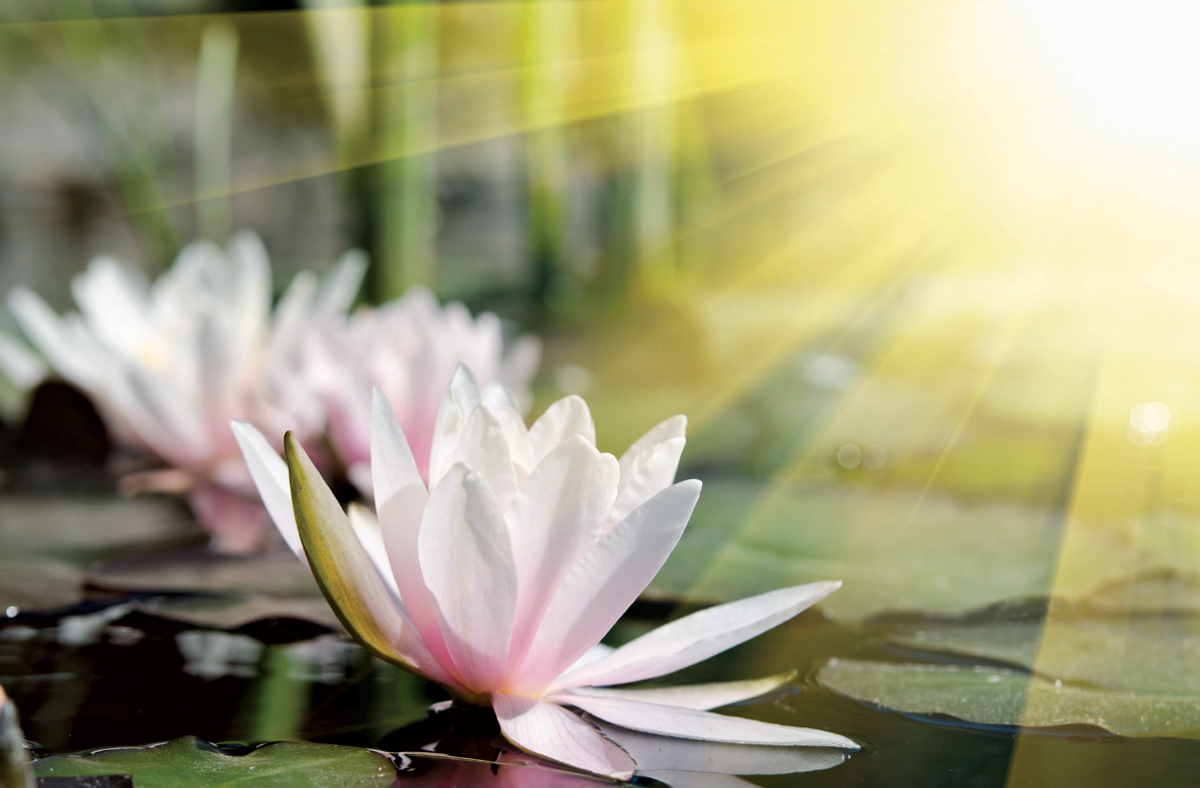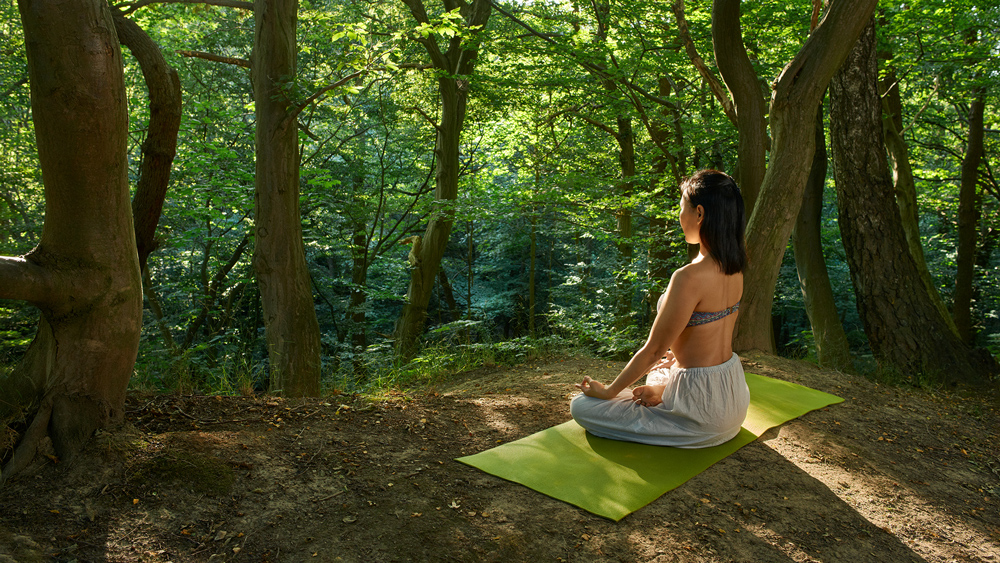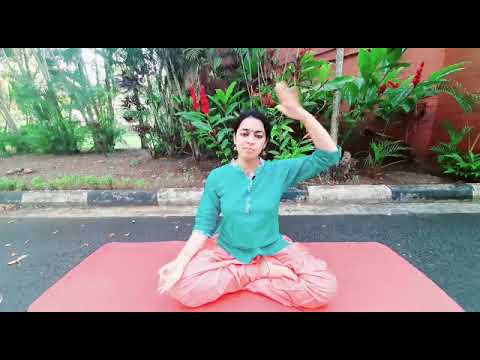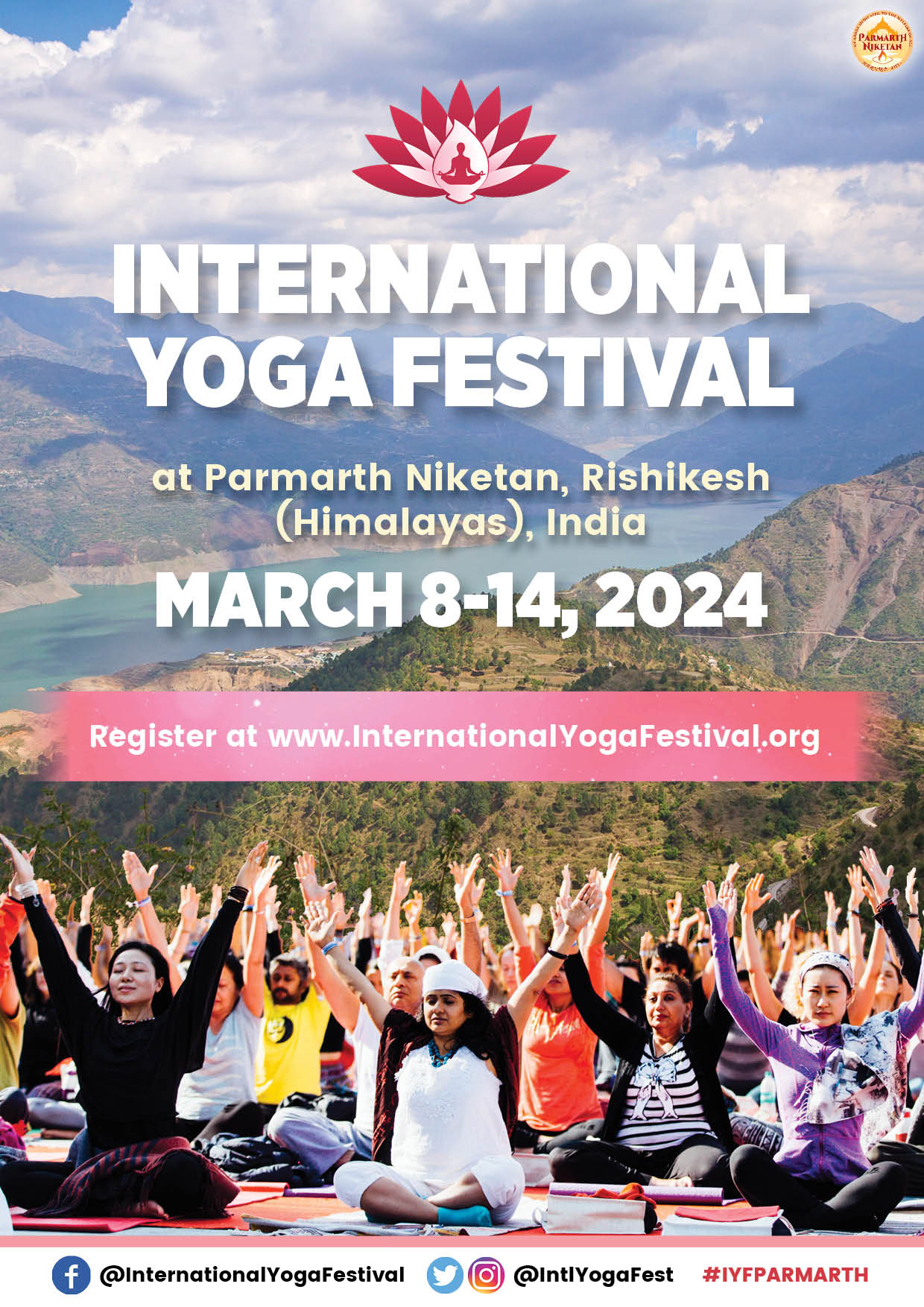An invitation to Ayurveda’s living wisdom
Ayurveda teaches the path of fulfillment of individual dharma as a way to stay healthy – spiritually, psychologically and, of course, physically. Disease strikes when we stray from the course of dharma. Cheating, lying, stealing, violence, and abuse may fester in us unnoticed by all; but our non-dharmic behavior cannot escape the searing look of our own Self.
What is Dharma?
Dharma is a concept that is not easy to translate into English. it is loosely translated to mean “religion,” and has become synonymous with religion because of its wide use over many years. Living in dharma, however, encompasses following a universal code of conduct that is essentially secular (non-religious), but entirely spiritual. “Dharma” has many meanings, such as “duty, ethical conduct, charity, law, not harming others, innate duty of things (e.g. the dharma of fire is to burn), compassion, altruism, positivity, etc.”
According to Sage Manu, the Hindu Law Giver, dharma has the following ten attributes:
Dhrti (patience)
Ksama (forgiveness)
Damo (mental steadfastness or mental strength)
Asteya (non-stealing)
Sauca (cleanliness)
Indriya nigraha (restraining of senses)
Dhi (wisdom)
Vidya (knowledge)
Satyam (truth)
Akrodham (non-anger)
Dharma is a core value of indian culture, and so important that it can even be described as a synonym of indian culture. to be cultured is to be dharmic. All that is positive is dharmic and all that is negative is non-dharmic. Dharma in itself is a cultural value, and also pervades all other cultural values.
![]()
Living Dharma in daily life for individuals, dharmic principles include social and ethical principles, which play out through deliberate, conscious choices. As such, upholding dharma in these areas is critical. Lacking dharma, human beings would quickly self-destruct.
When dharma becomes the substratum of our personal lives, it informs our ethics, thoughts, speech, actions, etc. Our daily choices then become naturally aligned with our highest intention, namely of elevating our own consciousness, which is eternal in nature. Following dharma ensures that one’s consciousness is elevating itself with every choice that the individual makes, and that the individual is not suffering by getting tangled up in the illusory possibilities, duality-ridden opposites, and general distress of this world.
Dharma enables every human being to lead a fruitful and positive life in peace and harmony. the sages clarify that following dharma is a matter of free will and not externally- imposed, punitive, social, moral, or religious conditioning, nor a belief system noted down in a rigid list of do’s and don’ts.
If dharma does not inform our physical, material, psychological, sexual, and spiritual desires, we suffer the consequences at every level: body, mind, and spirit. this is why Ayurvedic texts teach dharmic thoughts (sadvicara), conscious actions (satkarma), conscious dwelling (satvihara), dharmic behavior (sadacara), and dharmic living (sadvrtta).
Ayurveda helps identify the day-to-day or vyavaharika dharma related to our daily routine. When Ayurvedic dharma injunctions on right living, eating, thinking, sex, livelihood, exercise, sleep, and leisure are followed, for instance, one is living a dharmic lifestyle. this dharmic lifestyle, in turn, protects our life and enhances our
physical, psychological, social, moral, and spiritual health. And this, in turn, translates into life-sustaining oja, or the Ayurvedic immunity principle inside our body.
By this logic, a non-dharmic life ultimately destroys our own wealth and health, and becomes our self-created monster that sooner or later demolishes us. We do not die; we kill ourselves in a slow, insidious manner through daily non-dharmic choices.
Dharma is reflected in how we treat ourselves. it demonstrates our sense of responsibility towards our own body, our practice of self-control of our own minds, how we choose ethics in all our social interactions, and how we display abiding respect towards the environment and all its creatures.
The sages say: “Acara Prabhava Dharma,” meaning that dharma is born from self-discipline and good conduct. We have to become resolute, exercise will power, and take purposeful action to activate our dharmic being, lacking which, our by-default lazy, obsessive-compulsive, self- serving, and self-gratifying state of consciousness continues unabated.
The dharma of Ayurveda teaches cultivating deference for the microcosm (body) and the macrocosm (universe), and about the interrelationship between the two. in the dharma of daily living, we learn about give and take, harmony and balance, self-care and self-abuse, and respect and disrespect.
The dharma of Ayurveda teaches how self-care is really planet care, and how one healthy unit is the beginning of more healthy units. this health, gained through dharma, is in turn the foundation of a healthy life. When firmly established on the pillars of bodily health, we humans can dare to aspire for the fulfillment of material and spiritual goals. the practice of dharma entails the strategy to not only survive, but also thrive, and that too, excellently so. When dharma is violated, both the individual and society are violated, sooner or later.
Almost every life situation is an epic event of cosmic magnitude, bursting with dharmic question marks. in fact, hamlet’s “to be or not to be” is one such crossroad. When the dharmic content of our thoughts and actions is denied, blocked or resisted by us, ill health at the physical, psychological, or spiritual level will definitely eventually manifest.
Ayurveda declares that living by dharma is not only critical to the life here and now, but also influences our journey of consciousness after death. Ayurveda promises that dharma practiced in our daily life ultimately leads us face-to-face with the Absolute truth at our time of transition. Any wavering from the path of dharma leads one astray, and trapped in the endless cycle of birth and death.
Dharma not only ensures a good life and an even better afterlife; it also influences the collective human experience today, in this moment; and dharma’s regard or violation by society affects our collective consciousness in a big way.
A disease at one level is a savior at another. ill health is often a message to wake up. the one who explores the dharmic goals of this earthbound journey, listens to the voice of the spirit within, and thus, no more accidents, passivity, manipulations, and power games. the sages conceived of health on a grand scale, in which even the sun and moon were entreated to stay on the course of their respective dharma (spiritual journey), or else a cosmic chaos of unimaginable magnitude would follow. Likewise, the doshas – Vata, Pitta and Kapha – in our body have their respective dharmas (nature and function) and when the doshas, for example, stop following the dictates of nature, disease follows. in Ayurveda, we see collective consciousness being modified by living dharmically, and following spiritual and moral injunctions as social, but ultimately, spiritual creatures.
Ayurveda also recommends that we follow environmentally- friendly lifestyles, and cultivate compassion for all fellow beings, plants and animals, as we are all really individual parts of one collective consciousness.
Loss of Dharma affects the environment
Ayurveda conceives a dynamic model of this universe wherein all objects, beings, events, phenomena and experiences are vitally inter-connected. According to Ayurveda, when we humans choose to discard truthfulness, modesty and righteousness (dharma), we agitate not only our immediate sphere of influence, but the entire cosmos. Sage Charaka declares unequivocally, “The root cause of the derangement of wind (vayu), etc is unrighteousness.” Rivers become violent and change course, meteorites appear frequently, earthquakes shake the terrain, and even the sun, moon and stars become enraged.
Ayurveda regards natural catastrophe as the loss of equilibrium of the universal counterparts of the bodily doshas – Vata, Pitta and Kapha, which are Vayu (air), Agni (fire) and Soma (water), or to go still further, the three metaphysical vibrations: Rajas, Sattva and Tamas. In the environment, be it natural, social, psychological, or spiritual, vibration begets vibration. Before we bothered to speak up, what was the message vibrating away in our quiet silence?
Our ‘inner’ violence, or non-dharmic thoughts and actions towards each other, towards other species, and our abusive dealings with nature are tantamount to the disturbance of ‘gunas’ (vibrations in consciousness). This violence then affects our ‘outer’ world, or our immediate environment. These same vibrations, especially when a whole body of humans collectively vibrate it, echo out in time to affect even outer space, disrupting the ‘dharma’ and flow of heavenly bodies, like planets, stars, meteors, etc.
Today, our world is ravaged by an epidemic of diseases, toxins, and addictions. Even the frequency of earthquakes, floods, tornadoes and hurricanes has increased all over the globe. Sage Charaka’s proclamations over nature and environment could well read the same as text from any modern media news story. In his ultra ‘modern’ vision, ancient Vedic sage Charaka discusses seasonal vagaries and untimely disruption of seasonal rhythms. He attributes both to the generally non-dharmic approach, including anti-environmental and anti-nature policies, adopted by shortsighted Governments, their imprudent heads, and injudicious administrators.
Ayurveda clearly states: “Likewise, unrighteousness is also the cause of the destruction of the community by weapons.” (Charaka Samhita)
The Ayurvedic sages offered health to planet earth and then to the entire cosmos by suggesting measures that would guide human consciousness to walk only the path of dharma, or righteousness. Ayurveda proclaims: “One should behave like kith and kin to all living beings.
Sage Charaka suggests that, to promote righteousness all around, one should work upon cultivating certain qualities: truthfulness, benevolence, compassion towards all, a spirit of generosity, calmness in all situations, self-control in sexuality, and protecting oneself, as self-love is the core of evolved consciousness. Additionally, to train the mind, Charaka suggests seeking the company of celibate sages, listening to their evolved discourses, and daily self-study of scriptures.
Ayurveda awakens within each of us the power to heal ourselves. If this life is an extension of nature, then why not use nature to the best we can? Why be at war with nature? Why not instead outstretch both arms and find ourselves lost in nature’s compassionate embrace?
Ayurveda teaches peace with the internal forces that regulate body and mind, and a peaceful relationship with the external elements that compose our environment. Ayurveda is based upon remembering, reconnecting, and celebrating the eternal harmony and sacred connections between man and nature. In discovering the deep nurturance available in nature, followers of Ayurveda gradually become one with nature’s great eternal rhythm and cycle.
![]() Acharya Shunya – Hailing from a lineage of Vedanta sages in India, Acharya Shunya is an Ayurveda pioneer, master healer, mystic teacher, and published author. She founded the Vedika Global Foundation in Berkeley, California. She leads Ayurvedic workshops and retreats throughout the US and India. Acharya Shunya is known for her unique way of expressing Ayurveda in conjunction with Advaita Vedanta and Yoga. acharyashunya.com
Acharya Shunya – Hailing from a lineage of Vedanta sages in India, Acharya Shunya is an Ayurveda pioneer, master healer, mystic teacher, and published author. She founded the Vedika Global Foundation in Berkeley, California. She leads Ayurvedic workshops and retreats throughout the US and India. Acharya Shunya is known for her unique way of expressing Ayurveda in conjunction with Advaita Vedanta and Yoga. acharyashunya.com















